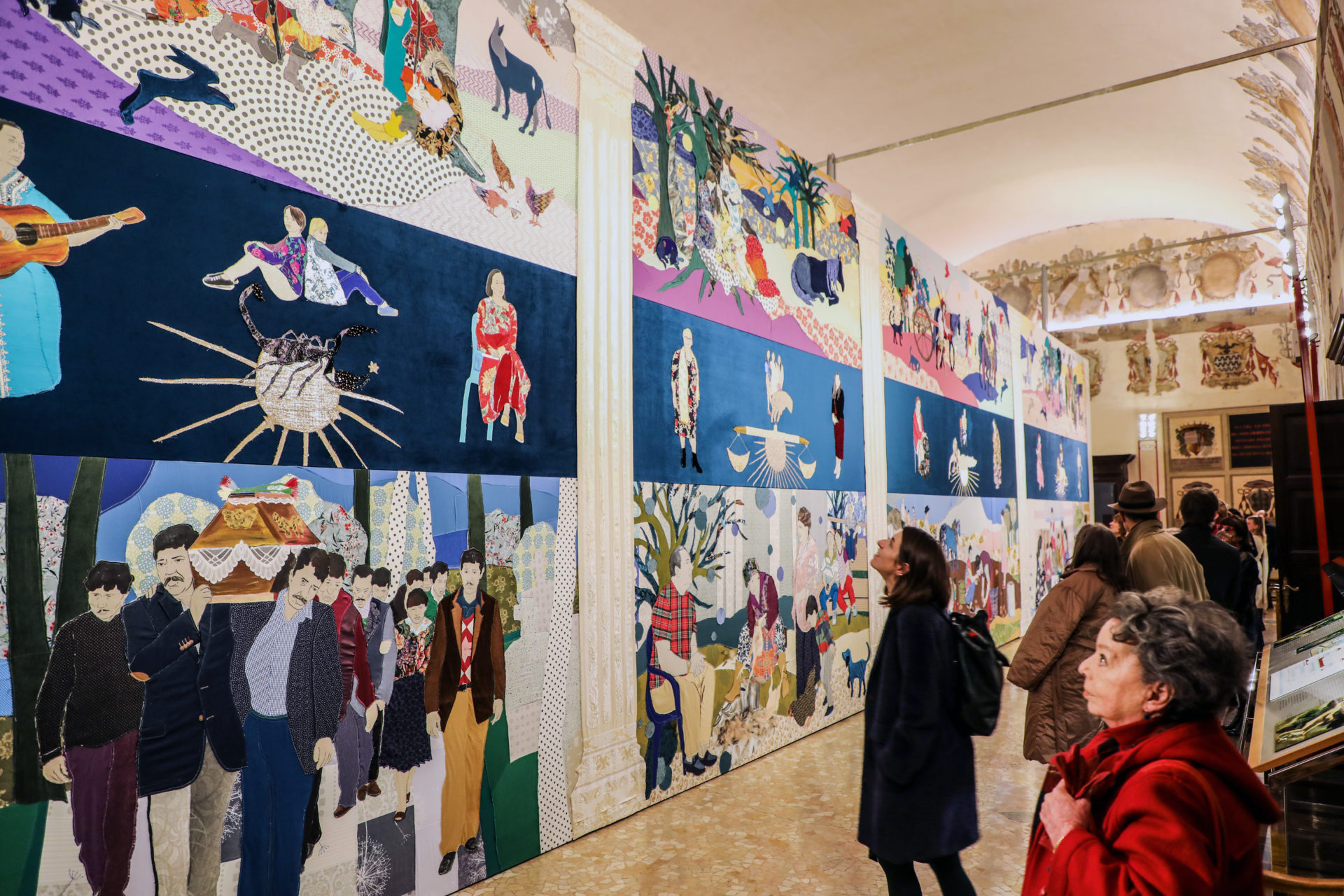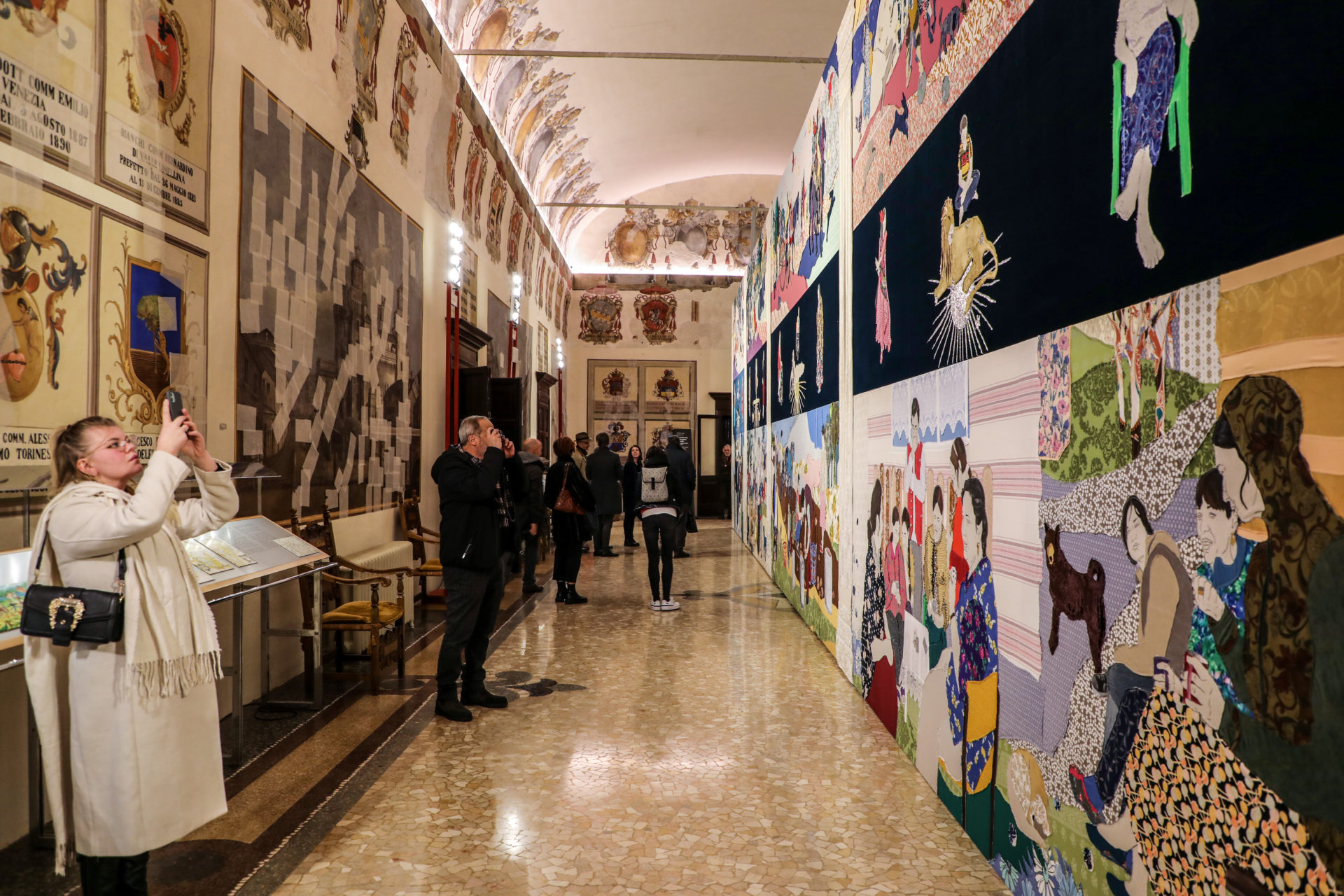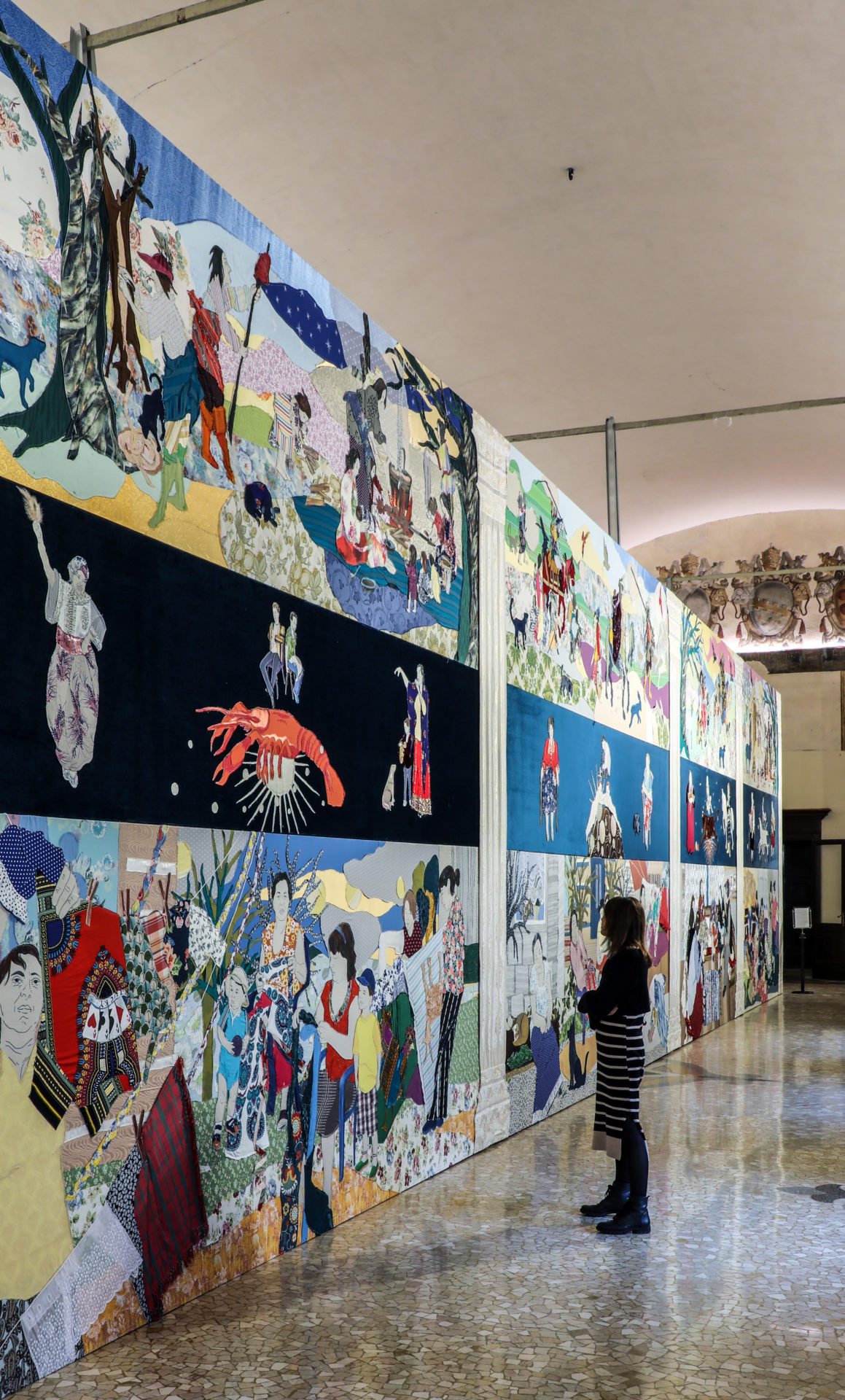
Re-enchanting the World: Homecoming
After its first public presentation in the Polish Pavilion at the 59th International Art Exhibition in Venice in 2022, the installation Re-enchanting the World by the Polish-Roma artist Małgorzata Mirga-Tas has arrived in Ferrara. Although this is the first time that the installation is to be put on display in Ferrara, it has actually returned home. This symbolic homecoming (anabasis) is the repayment of the debt that the artist has incurred here. The exhibition returns to the city where it all began, to the city whose history and monuments have become a source of inspiration for the artist and her work. Together with the curators Wojciech Szymański and Joanna Warsza, Mirga-Tas visited Ferrara for the first time while working on an installation for the 2022 Venice Biennale. During her stay, she closely observed the frescoes in the Palazzo Schifanoia – just like those who had arrived there before her: the German-Jewish art historian and scholar Aby Warburg and the Scottish writer Ali Smith, in particular. She looked at the sites immortalized in literature by the great Ferrarese Giorgio Bassani and admired the works created by other pre-eminent artists from the city – Francesco del Cossa and Ercole de’ Roberti. She also learnt about their patron and the commissioner of the Hall of the Months – the good Duke Borso d’Este.
The current presentation at the Estense Castle prepared with the Fondazione Ferrara Arte consists of eight panels created by the artist (out of twelve in total). Mirga-Tas has decided to showcase the months of March, April, May, June, July, August, September, and October. Seven of them are the very same months that have been preserved in the Palazzo Schifanoia – a place that was the main point of departure for her Venice show.
However, the visitors to the Estense Castle and Mirga-Tas’ Ferrarese show are not going to see the three stories that they know from the Palazzo Schifanoia: the story of the Olympian gods, of the decans, and of the everyday life in 15th-century Ferrara. They have been replaced by three other stories narrated by the artist.
The upper band depicts a story of a mythical journey of Roma to Europe; this one is based on a series of 17th-century prints by the Lorraine engraver Jacques Callot. The middle band is an affective archive of Roma herstories combining images of real women with magic and astrology. The lower band depicts the everyday life in artist’s hometown, Czarna Góra, and in other Roma settlements in Podhale and Spiš in the Tatra mountains, Poland.
The Venice and now Ferrara-based exhibitions are the artist’s manifesto on the Roma identity and art. Having entered a ‘picture palace’ built at the Polish Pavilion in the Giardini, the visitors experienced a kind of immersive installation of twelve large-format textiles, corresponding to the months of the calendar, which expands the history of art with representations of Roma culture, the largest European minority. Crucial structure for the artist was the Palazzo Schifanoia itself: a place where Aby Warburg coined his influential concept of Nachleben, a life after life of images. The zodiac signs, the decan system, allegories of months, cyclicity and the migration of symbols across time and continents – between India, Persia, Asia Minor, ancient Greece, Egypt and Europe – became visual and ideological points of reference for Małgorzata Mirga-Tas, who decolonised and inscribed them in a specific Polish-Roma vernacular historical experience. Now, this unique dialogue between the Palazzo Schifanoia and the Polish Pavilion, between Czarna Góra and Venice, between times, cultures, and identities is to re-enchant Ferrara.
—Wojciech Szymański, Joanna Warsza
Małgorzata Mirga-Tas
Re-enchanting the World: Homecoming
17 December 2022–10 April 2023
Castello Estense, Ferrara, Italy
curators: Wojciech Szymański, Joanna Warsza
exhibition organised by Fondazione Ferrara Arte, Servizio Musei d’Arte del Comune di Ferrara and Zachęta — National Gallery of Art in Warsaw
coordination: Tiziana Giuberti and Joanna Waśko





